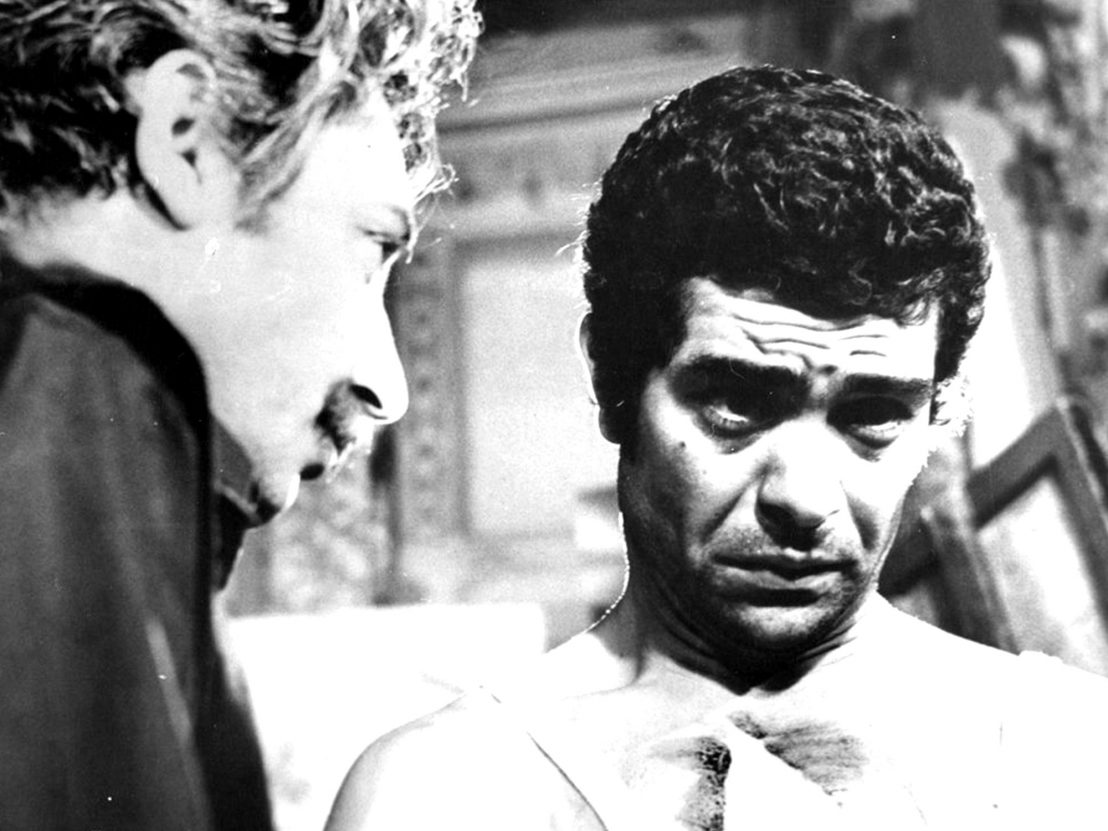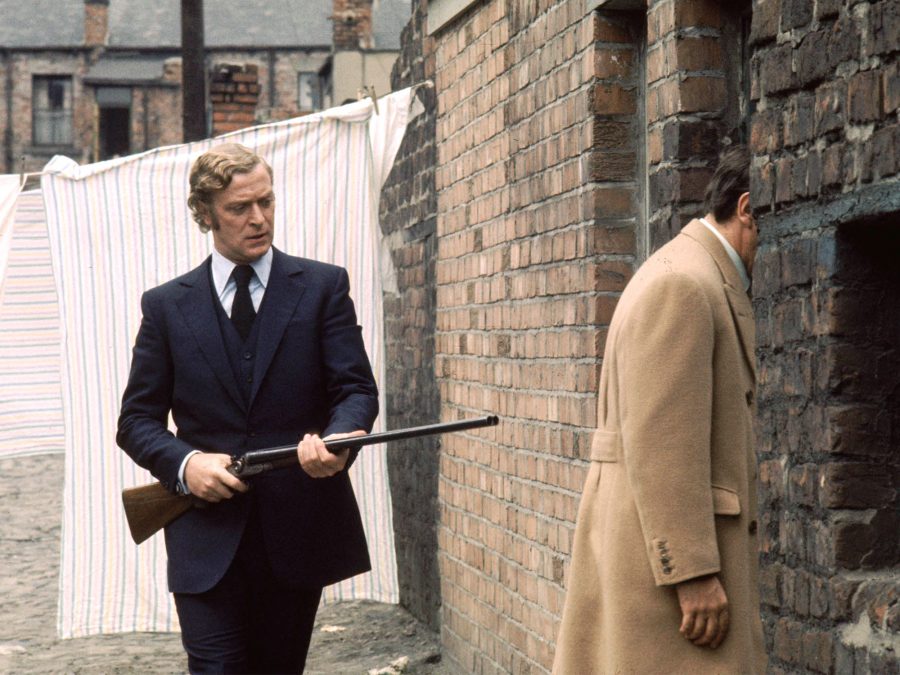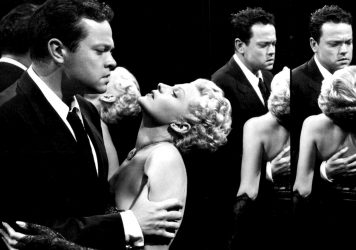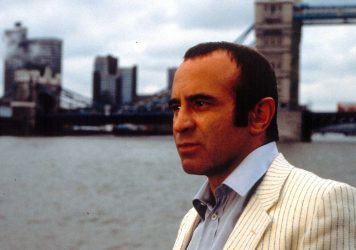
Although coolly received upon its release in 1971, Mike Hodges’ Get Carter is now regarded as both a paragon of the crime genre and one of the most iconic British films of its era. Adored by the likes of Quentin Tarantino and riding high on numerous ‘greatest-ever’ lists, the film’s suave antihero, Jack Carter (Michael Caine), no longer totes his gun on the far-flung fringes of popular culture. Most people, however, are unaware of an eerily similar Iranian feature made two years earlier, which is still virtually unknown outside Persian-speaking circles despite its importance in the history of the region’s cinema.
Masoud Kimiai’s Gheisar is arguably even more iconoclastic than Hodges’ film (which is said to have spawned the British crime noir genre) in that it marked a dramatic departure not only from other crime films but the majority of features being made in Iran at the time. Prior to Gheisar, filmmakers like Ebrahim Golestan, Kamran Shirdel and Forough Farrokhzad presented an alternative to the tawdry and often vulgar Film Farsi titles which dominated the country’s cinematic output in the 1960s. The Iranian New Wave (Moj-e No) was already rolling along when Gheisar was released – but it was Kimiai’s film that truly ushered in the movement.
Neither overtly avant-garde nor pandering to the broad tastes of the masses, it was – unlike Get Carter – both a critical and commercial success in its own time. Set on the dusty streets of southern Tehran, far from the Shah’s palaces and the leafy idylls up north by the mountains, Gheisar is at once a tale of honour and revenge and a biting social commentary. Upon arriving in the city from the south of Iran where he works, the film’s eponymous protagonist (Behrouz Vossoughi) discovers through his grief-stricken uncle and mother that his brother, Farman, has been killed at the hands of Karim Ab-Mangol and his brothers Mansour and Rahim.
As if that weren’t enough, he also learns that Farman died in an attempt to avenge their sister, Fati, who, as her suicide note explains, killed herself after being raped by Mansour. Paying no heed to the remonstrances of his family or the consequences of his plan, the once-buoyant Gheisar resolves – in the face of the “inertia” around him, as Kimiai puts it – to hunt down and kill the Ab-Mangol brothers one by one, thereby avenging his siblings. Although he succeeds, Gheisar, too, falls victim to the trail of vengeance he blazes.
Aside from a few details, the plot of Get Carter is more or less identical. Based on Ted Lewis’ 1970 novel ‘Jack’s Return Home’, Hodges’ film tells the story of Jack Carter (Michael Caine), a hardboiled gangster who returns to his native Newcastle to “find out what happened” to his dead brother Frank. The story fed to Carter is that Frank was killed in a drink-driving accident but, not believing this account and having no faith in the local police, he decides to take matters into his own hands and sets out to track down those responsible for Frank’s death.

Along the way, Carter – who is being hunted by the mob for having turned rogue and sticking his nose where he shouldn’t – also discovers that Frank’s teenage daughter, Doreen, was involved in a pornographic film with one of his old acquaintances and a woman he’s sleeping with. With two problems to take care of, Carter proceeds to ruthlessly dispose of anyone who has any sort of connection to either incident. Just as he finishes off one of the men who, as it turns out, forced whisky down Frank’s throat, Carter is himself killed by a hitman in the service of the crime boss behind his brother’s murder.
Get Carter’s likeness to Gheisar extends far beyond its plot. Both films are driven in their quest for revenge predominantly by notions of honour and an injured sense of pride. Gheisar talks about mardanegi (manliness) in explaining to his uncle why he wants to kill the Ab-Mangol brothers, and also expresses concern that the family’s namoos (honour) would be tarnished were the real reason for his sister’s death to be revealed.
Likewise, the emotionally bankrupt Carter is not motivated by feelings of loss or love for either his brother or niece (both of whom he appears distant from), but rather an urge to requite what he sees as an affront on his dignity and the Carter name. Additionally, both men are distrustful of the authorities and refuse to allow others to help them deliver justice. And while Carter is by far the more vindictive of the two – even going so far as to give a woman a heroin overdose – Gheisar nonetheless exhibits the same remorselessness in killing, only repenting for having to leave his fiancée hanging.
Towards the beginning of both films, the main characters travel home northwards via train. Both also end in desolate, ominous surroundings, with Carter getting shot in the head and Gheisar taking refuge in an abandoned railway carriage after being stabbed in the chest by Mansour and shot in the leg by the police (it’s unclear whether he lives or dies, although the latter is more likely). Further similarities are evident in the films’ bar scenes, as well as in the way Kimiai and Hodges use central riffs in the musical scores to accentuate key dramatic moments.
Had Hodges, or Lewis before him, seen or at least heard of Gheisar? Given that ‘Jack’s Return Home’ was published only a couple months after Gheisar premiered, it’s unlikely Lewis knew of it. Likewise, Hodges began working on Get Carter in early 1970, meaning he would have had a very short timeframe in which to visit Iran (then easily accessible and routinely visited by a host of Western auteurs, including Agnès Varda and Pier Paolo Pasolini, who also filmed there) and see the film.
Furthermore, Hodges has spoken of Get Carter as being influenced by the American westerns he watched as a child, and has yet to make any Iranian connection. Yet Gheisar is noteworthy not simply because of its proximity and resemblance to Get Carter. Sinister, sexy and steeped in blood, this was a watershed moment in the Iranian New Wave and remains one of the most important Persian-language films ever made.
Published 13 Jul 2019

The Lady from Shanghai is a prime example of the legendary filmmaker’s complicated genius.

This Thatcher-era gangland classic returns to the screens via a newly restored print.

Mad Max meets Monty Python is the best way of describing this strange, little-seen Soviet gem.